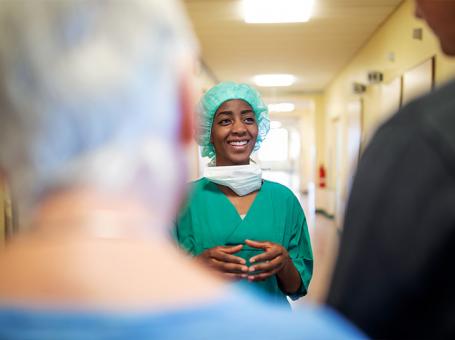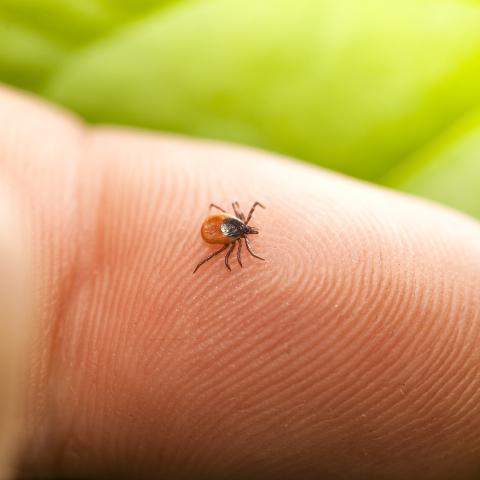Posted In Health Tips on October 01, 2023

Detecting and diagnosing breast cancer early is the most effective way to reduce mortality rates. There are currently more than 3.8 million women with a history of breast cancer in the United States. The American Cancer Society (ACS) estimates there will be over 290,000 new cases of invasive breast cancer in women in the U.S. this year, with over 43,000 of these being fatal. Additionally, almost 3,000 American men this year are expected to be diagnosed with breast cancer, and over 500 are expected to die from the disease.
The facts about breast cancer
- About 1 in 8 American women will develop invasive breast cancer in the course of their life.
- Breast cancer is the most commonly diagnosed cancer among American women and is the second leading cause of cancer death in U.S. women behind lung cancer.
- Risk factors:
- A woman’s risk of breast cancer nearly doubles if she has a first-degree relative (mother, sister, daughter) who has been diagnosed with breast cancer. Yet almost 85% of breast cancers occur in women who have no family history of breast cancer.
- Just being a woman and growing older are the two biggest risk factors for breast cancer.
- There are other risk factors you can change, such as smoking, alcohol consumption, and physical inactivity.
Early detection is key
Consistent screenings are the most effective way of spotting breast cancer early before it spreads to other parts of the body (metastatic cancer). Regular breast self-exams and yearly mammograms are important tools in breast cancer detection — especially early detection, when cancers may be more treatable. The ACS recommends that women with an average risk of breast cancer start screening at age 40 to 44 years, and those with a more advanced risk of breast cancer start screening at age 30.
Breast cancer screenings
Here are some of the most common screenings for breast cancer:
- Breast exam: Checking the breasts for any lumps or abnormalities. Can be done during an annual physical by a healthcare provider, or during a self-exam. If something unusual is found, generally an imaging test is scheduled.
- Mammogram: An x-ray imaging of the breast that can show certain abnormalities forming in the breast, such as masses, calcifications, and asymmetries. These can help detect early stages of cancer before physical symptoms appear.
- Breast MRI: Magnetic resonance imaging (MRI) is often used for those at higher risk of breast cancer.
- Biopsy: A needle or incision biopsy is done if any of the imaging tests find something abnormal, as this is the only way to determine if the abnormality is cancerous.
Treatment and survival rates
If breast cancer is detected, treatment decisions should be made jointly by the patient and the physician after consideration of the cancer stage and characteristics; patient age; menopausal status; preferences; and risks and benefits associated with each option. Most women with non-metastatic breast cancer will have some type of surgery, which is often combined with other treatments such as radiation therapy, chemotherapy, hormone therapy, and/or targeted drug therapy to reduce the risk of recurrence.
Early detection is critical since it affects survival rates. According to the ACS, the 5-year survival rate for breast cancer that has not spread beyond the breast is 99%. For cancer that has spread to nearby lymph nodes, that number falls to 86%, and if the cancer has spread to more distant parts of the body, the 5-year survival rate is just 29%.
Improving access to care
Why would anyone not get an annual mammogram to help detect early stages of breast cancer? There are several barriers to care that may prevent women from receiving recommended screenings, including:
- Lower-income areas may not have a local mammogram machine because of its cost and its sole use for breast imaging.
- The patient may not have access to or be able to afford a personal vehicle, public transportation or ride-sharing service.
- The patient's insurance may not cover the cost of the test and associated charges, or they may not have insurance at all.
Unfortunately, if routine screenings and care are put off and breast cancer is found in later stages, the treatments usually involve larger health expenditures and poorer outcomes. Just imagine how many lives could be saved if everyone took advantage of early screening methods, and if these were more widely available and affordable for all.
Community resources
- TidalHealth Breast Center's Breast Cancer Patient Navigators can help you find the resources you need. You can reach them at 410-543-7597 or 410-912-6908.
- Screening For Life is a program through Delaware's Division of Public Health that provides payment for cancer screening tests to qualified Delaware adults. To learn more, visit Screening for Life | Delaware Health and Social Services or call 302-744-1040.
- Maryland’s Breast and Cervical Cancer Early Detection Program (BCCP) provides breast and cervical cancer screening, diagnosis, and patient navigation services to eligible women across the state. To learn more, visit BCCP (maryland.gov) or call 1-800-477-9774.
- The Maryland Cancer Fund offers Cancer Treatment Grants for low-income Marylanders through local health departments and Primary/Secondary Grants to entities that provide cancer prevention, screening and cancer prevention activities. To learn more, visit Maryland Cancer Fund (maryland.gov) or call 410-767-6213.





